Brake pads play a crucial role in the safe operation of vehicles. Therefore brake pads are one of the most essential components of a vehicle’s braking system. These small yet vital parts are responsible for generating friction, enabling the vehicle to slow down or come to a complete stop. However, the significance of brake pads goes beyond just facilitating smooth braking.
Worn-out brake pads pose potential dangers, compromising the vehicle’s ability to stop efficiently, increasing stopping distances, and potentially leading to accidents. So, being aware of bad brake pads symptoms and maintaining brake pads in good condition is important to ensure road safety for both drivers and pedestrians.
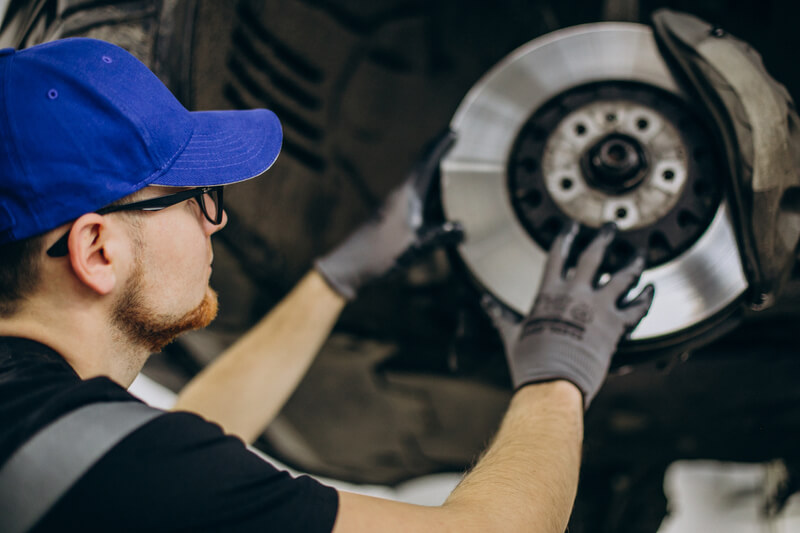
To guide you in understanding how brake pads work and the key signs of bad brake pads, this post will be helpful. Without further ado, let’s get started!
Understanding Brake Pads:
To understand brake pads, let’s first have a look at what these actually are and how they function.
What are Brake Pads & How Do They Function?
Brake pads are essential components of a vehicle’s braking system. They provide the necessary friction to slow down or stop the vehicle. They are positioned on either side of the brake rotor and are squeezed against it when the brakes are applied. This action converts the kinetic energy of the moving vehicle into heat energy, thus reducing its speed.
What are The Most Common Types of Brake Pads?
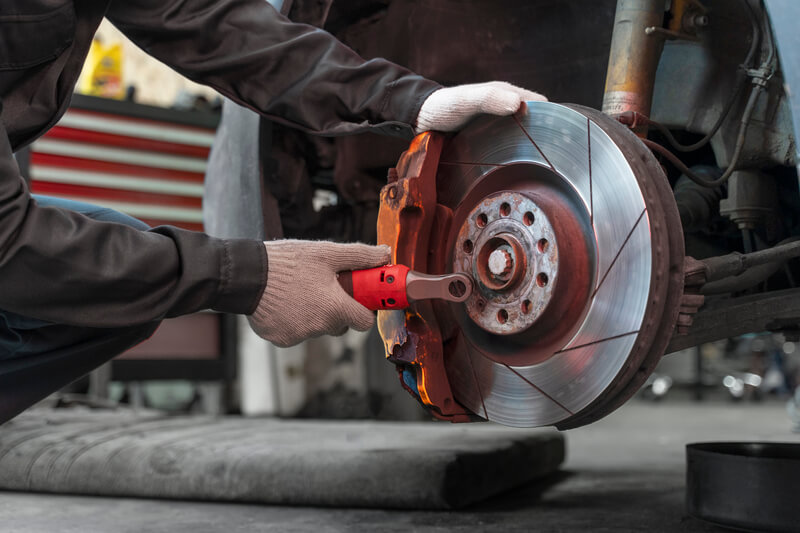
There are three main types of brake pads:
Organic Brake Pads:
These are made of materials like rubber, carbon, and fiberglass. They are generally softer and quieter as compared to other types of brake pads. Thus these are popular choices for everyday driving.
Semi-metallic Brake Pads:
These brake pads contain a mix of metal fibers and other materials, such as graphite or copper. They offer improved heat dissipation and durability. Thus these are suitable for high-performance vehicles or heavy-duty applications.
Ceramic Brake Pads:
These brake pads are made of ceramic fibers mixed with filler materials. They are long-lasting, provide excellent stopping power, and produce less brake dust.
Signs of Worn-Out Brake Pads:
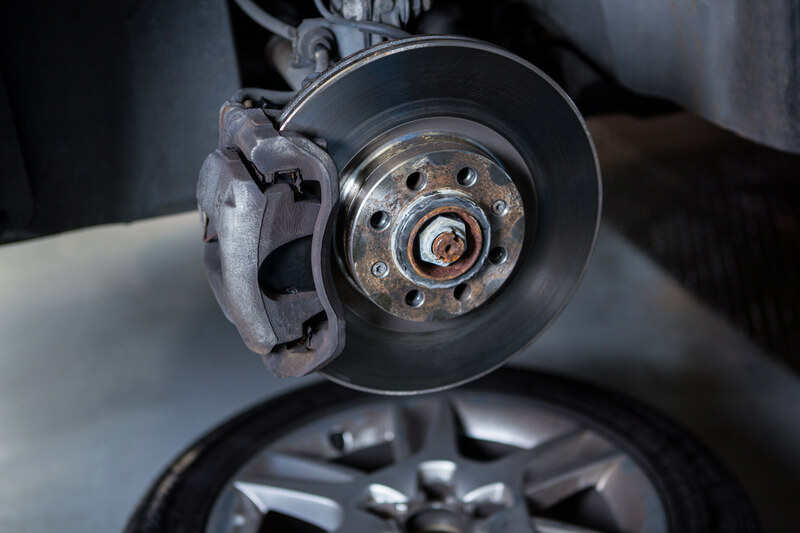
The warning signs of worn-out brake pads can manifest in various ways, indicating the need for immediate attention.
- Squealing or Screeching Noise: One common indication is a worn-out brake pad sound. This sound can be recognized as a squealing or screeching noise when applying the brakes. This noise is often caused by a built-in wear indicator that comes into contact with the rotor surface, signaling that the brake pads have reached their minimum thickness.
- Vibrations or Pulsations While Braking: Another worn-out brake pad symptom can be experienced through vibrations or pulsations while braking. These vibrations can suggest uneven wear on the brake pads or a potential issue with the brake rotors, such as warping.
- Reduced Brake Responsiveness: Worn-out brake pads may result in reduced brake responsiveness. As a result, it might take more effort and pressure on the brake pedal to bring the vehicle to a stop.
- Longer Braking Distances: As the brake pads wear down, the friction required to slow down or stop the vehicle decreases, resulting in increased stopping distances. This can significantly impact the overall safety of the vehicle and its occupants.
- Soft or Spongy Brake Pedal: This is another brake pad wear indicator. This happens due to air or moisture in the brake system, causing a loss of hydraulic pressure and compromising the efficiency of the braking action.
- Warning Lights on the Dashboard: Warning lights, such as the brake warning light or ABS (Anti-lock Braking System) light, may illuminate when there is a problem with the brake pads. These warning lights serve as crucial alerts to potential brake system issues.
How to Visually Inspect Brake Pads:
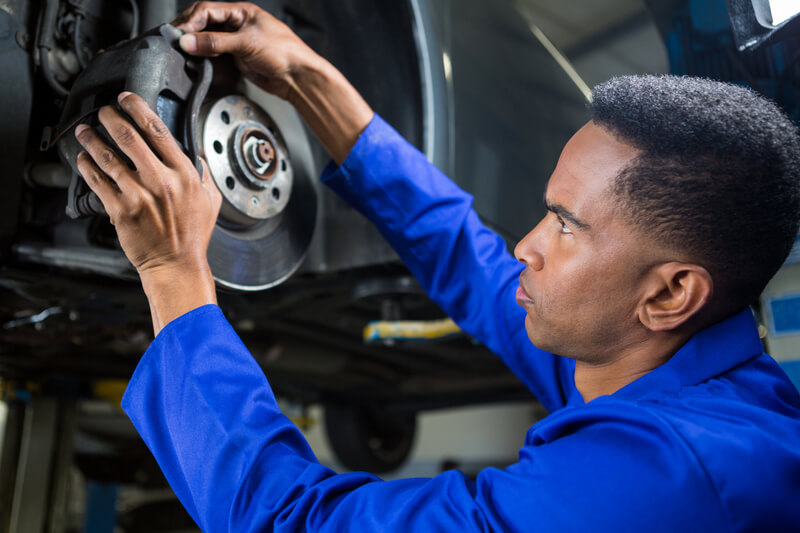
To visually inspect brake pads, follow these steps:
- Wheel Removal: Start by safely raising the vehicle and removing the wheel of the desired brake assembly that you want to inspect.
- Visual Examination: With the wheel removed, locate the brake caliper and rotor. Look through the caliper openings or between the spokes of the wheel to observe the brake pads.
- Thickness and Wear Indicators: Check the thickness of the brake pads. Most brake pads have wear indicators, small metal tabs, or grooves that become exposed as the pads wear down. If the pads have worn close to or beyond the wear indicators, it’s time for a replacement.
- Uneven Wear or Damage: Inspect for signs of uneven brake pad wear and tear. This may indicate caliper or suspension issues. Look for any grooves, cracks, or missing chunks on the surface of the brake pads. Additionally, check for any signs of contamination, such as oil or fluid leaks, which can affect brake performance.
- Overall Pad Condition: Assess the overall condition of the brake pads. If the pads appear significantly worn, cracked, or damaged, they should be replaced.
If you are unsure about the condition of your brake pads or lack experience with brake inspections, seek assistance from a qualified mechanic or automotive professional.
Additional Warning Signs of Worn-Out Disc Brake Pads:
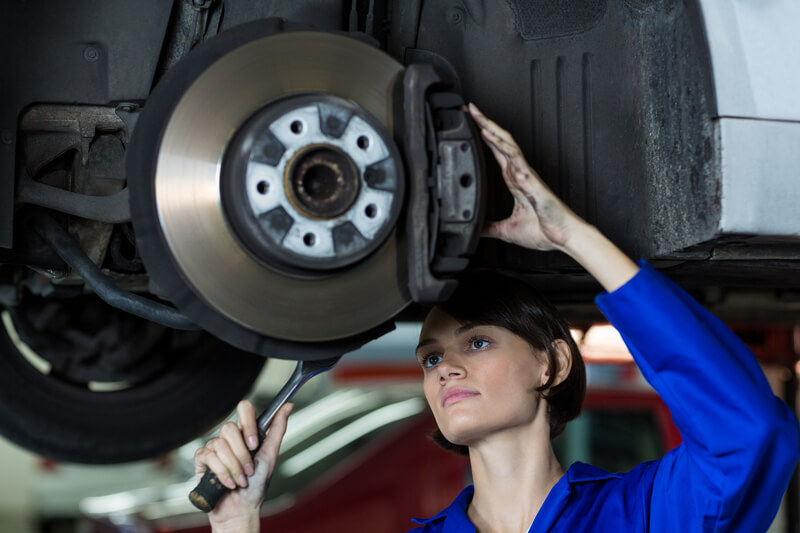
Here are some more warning signs of worn-out brake pads that you must not ignore:
- Burning smell when braking: A burning smell while applying the brakes can indicate overheated brake pads. This may occur due to excessive friction caused by worn-out brake pads or a dragging brake caliper.
- Grinding or metal-on-metal noise: This noise suggests that the brake pads have worn down completely, and the metal backing is making direct contact with the brake rotor.
- Pulling to one side while braking: When the vehicle pulls to one side during braking, it could indicate uneven wear of the brake pads, a sticking caliper, or an alignment problem.
- Brake fluid leaks: Any signs of brake fluid leaks, such as wet spots or dripping near the wheels, can lead to brake failure.
If you find any of these signs, make sure the damage should be repaired immediately to ensure the proper functioning of the braking system.
What to Do When Brake Pads Are Worn Out?
When brake pads are worn out, instead of thinking about how long you can drive without brake pads, just take immediate action.
Why Should You Take Immediate Action?
Worn-out brake pads can compromise braking performance, increase stopping distances, and pose a safety risk. Prompt replacement ensures optimal braking capability and enhances road safety.
What Are The Possible Safety Precautions You Can Take Before DIY Inspection/Repair?
Before attempting any DIY inspection or repair, ensure you have proper safety gear, such as gloves and eyewear. Use jack stands to secure the vehicle, follow instructions carefully, and be cautious of hot components.
Seek Professional Help
Qualified mechanics have the expertise to diagnose and replace worn brake pads correctly, ensuring proper functionality and safety.
Don’t Think Twice When It Is Required to Replace Brake Pads
If you want to replace the worn-out brake pads, follow the below-mentioned steps to do everything easily-
Step 1: Remove the wheel
Step 2: Disassemble the brake caliper
Step 3: Remove the old brake pads
Step 4: Install new pads
Step 5: Reassemble the caliper
Step 6: Properly torque the caliper bolts
You can also follow manufacturer guidelines or seek professional guidance for your specific vehicle to ensure correct installation.
Brake Maintenance Tips:
Proper brake maintenance is essential for optimal performance and safety. Consider the following brake maintenance tips:
- Regular inspection intervals: Schedule regular inspections to assess the condition of brake pads, rotors, calipers, and other components. This allows for early detection of any potential issues and timely maintenance or replacement.
- Proper cleaning and lubrication: Keep brake components clean and free of debris to prevent buildup and ensure smooth operation. Apply appropriate lubrication to caliper slides and other moving parts as recommended by the manufacturer.
- Choosing high-quality brake pads: Invest in high-quality brake pads that are suitable for your vehicle. Quality pads offer better performance, durability, and reduced noise. Consult your vehicle’s specifications or seek professional advice for the best brake pad options.
- Monitoring brake fluid levels: Regularly check the brake fluid level in the reservoir and ensure it is within the recommended range. Insufficient brake fluid can lead to decreased braking efficiency. If the fluid appears dirty or discolored, consider flushing and replacing it as per manufacturer guidelines.
The bottom line,
Recognizing the signs of worn-out brake pads is crucial for ensuring road safety. Squealing noises, vibrations, reduced responsiveness, longer braking distances, soft brake pedal, and dashboard warning lights are indicators that require immediate attention. Needless to say, addressing worn-out brake pads promptly is essential to maintain reliable and effective braking performance. You can seek professional help or take DIY measures. Enjoy a safe and smooth driving experience.
FAQs:
Q: Can you drive with worn brake pads?
A: Driving with worn brake pads is not recommended. It can compromise the vehicle’s braking performance, increase stopping distances, and pose a safety risk.
Q: What is the normal life of brake pads?
A: The lifespan of brake pads varies depending on driving habits, vehicle type, and other factors. On average, brake pads can last anywhere from 30,000 to 70,000 miles or more.
Q: Should you replace all 4 brake pads at once?
A: It is generally recommended to replace all four brake pads at the same time for balanced braking performance and even wear across the braking system.
